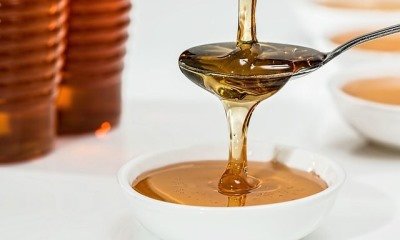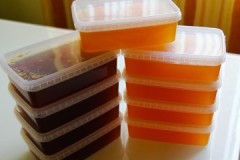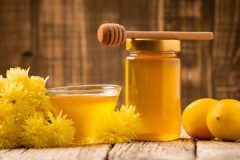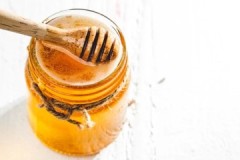Is it normal for honey to darken during storage? Is it worth eating?
 Honey is one of the products that can be stored for a very long time if suitable conditions are provided.
Honey is one of the products that can be stored for a very long time if suitable conditions are provided.
Over time, it can crystallize, changing its consistency, but retaining the entire volume of useful substances.
A significant change in the aroma of the product and color should alert you. In some cases, darkening is normal, in others it indicates serious problems.
Why honey darkened during storage and whether it can be eaten, we will tell you in the article.
Content
Why does it get dark and black in the jar?
Honey is a nutritious and healthy product that can be stored well for months and even years. Over time, changes occur to it - almost all types become sugared quite quickly, and sometimes delamination and darkening are possible. There may be several reasons for the color changing to a darker shade..
Exposure to light
If honey, especially if it is in a glass container, is exposed to light, it is intensely affected by ultraviolet light. This may result in product discoloration and delamination. The preventative measure is very simple - ensure that supplies are stored in a dark place, reliably protected from sunlight.
Oxidation
 Oxidation is one of the common causes of color change to darker. Glucose and fructose in flower nectar form hydrogen peroxide when heated.
Oxidation is one of the common causes of color change to darker. Glucose and fructose in flower nectar form hydrogen peroxide when heated.
It is this substance that begins to oxidize other components, leading to a color change.
Another factor is choosing the wrong cookware.Some types of wood and metal can react with flower nectar and cause it to darken. Certain types of honey, such as buckwheat, are dark in nature.
Is it possible to eat?
Before eating honey that has darkened, you should check its condition. If the product is natural and high-quality, then its color will be fairly uniform and its consistency will not be too liquid.
At the same time, the smell should remain pleasant and bright. Any changes may indicate poor product quality or the beginning of a spoilage process. The taste should also remain sweet and without bitterness.
What to do with darkened product?
If the product has only changed color but is still of good quality, it can be consumed solo and added to various dishes.
On a chemical level, the dark hue is due to reactions involving natural sugars contained in flower nectar. Darkening may also indicate the age of the product and its good quality.
If honey darkens due to very long storage, the product can still be used. A jar that has been lost for several years will contain fewer nutrients than a newly collected product, but it will not cause any particular harm. This honey product can be used in cooking.
If honey has darkened, it will not be possible to restore its previous lighter shade. But there is a way to turn it into cream honey, which is almost white in color.
You can learn how to do this from the video:
How to store it so it doesn't darken?
In order to prevent honey from darkening, it is necessary to apply preventive measures in practice.
These include the following:
- do not expose honey reserves to light, much less to the sun’s rays;
- do not use unsuitable containers (made of aluminum, copper, etc.);
- air temperature should be from +5 to +20°C;
- the humidity in the place where sweet stocks are kept should be low (no more than 75%);
- Do not allow moisture to enter the container;
- You need to use only clean and dry storage containers;
- Do not heat the product to more than +40°C.
In addition to the storage features of the finished product, influences compliance with the rules by beekeepers themselves when harvesting honey:
 Pumping must be carried out using filters.
Pumping must be carried out using filters.- Honey must be mature.
- Honey from flowers that do not contain many amino acids practically does not darken, this must be taken into account.
- After harvesting, cooling is recommended to maintain color and quality.
Honey storage conditions are specified in GOST R 54644-2011.
This kind
Some types of honey are already dark to begin with. A brown, almost black tint will appear when bees collect honeydew from coniferous trees (fir, pine, spruce, etc.) and honeydew.
In addition to the type of plant, weather conditions also affect the appearance and composition of nectar. During a drought, when it has not rained for a very long time, bees have to process dry plants. The result is honeydew honey that is dark in color and liquid in consistency.
The duration of storage also affects the composition of the product and the color. Darkening may occur over time. Honey is also influenced by the timing of collection and even the type of bees.Therefore, it is possible to predict in advance what kind of honey will be harvested only with a degree of probability.
This video will tell you about honeydew honey:
Conclusion
Under natural conditions, bees very rarely collect flower nectar only from a certain type of plant. Most often, the final product is a mixture of various honey plants.
A certain type may predominate in it, but most likely there will be a variety of impurities, which, in turn, affect the color and taste of the product, as well as how it will be stored.
Natural honey is rich in beneficial substances. But they can be lost very quickly due to improper storage. Therefore, it is so important to follow simple rules for preserving honey reserves.


